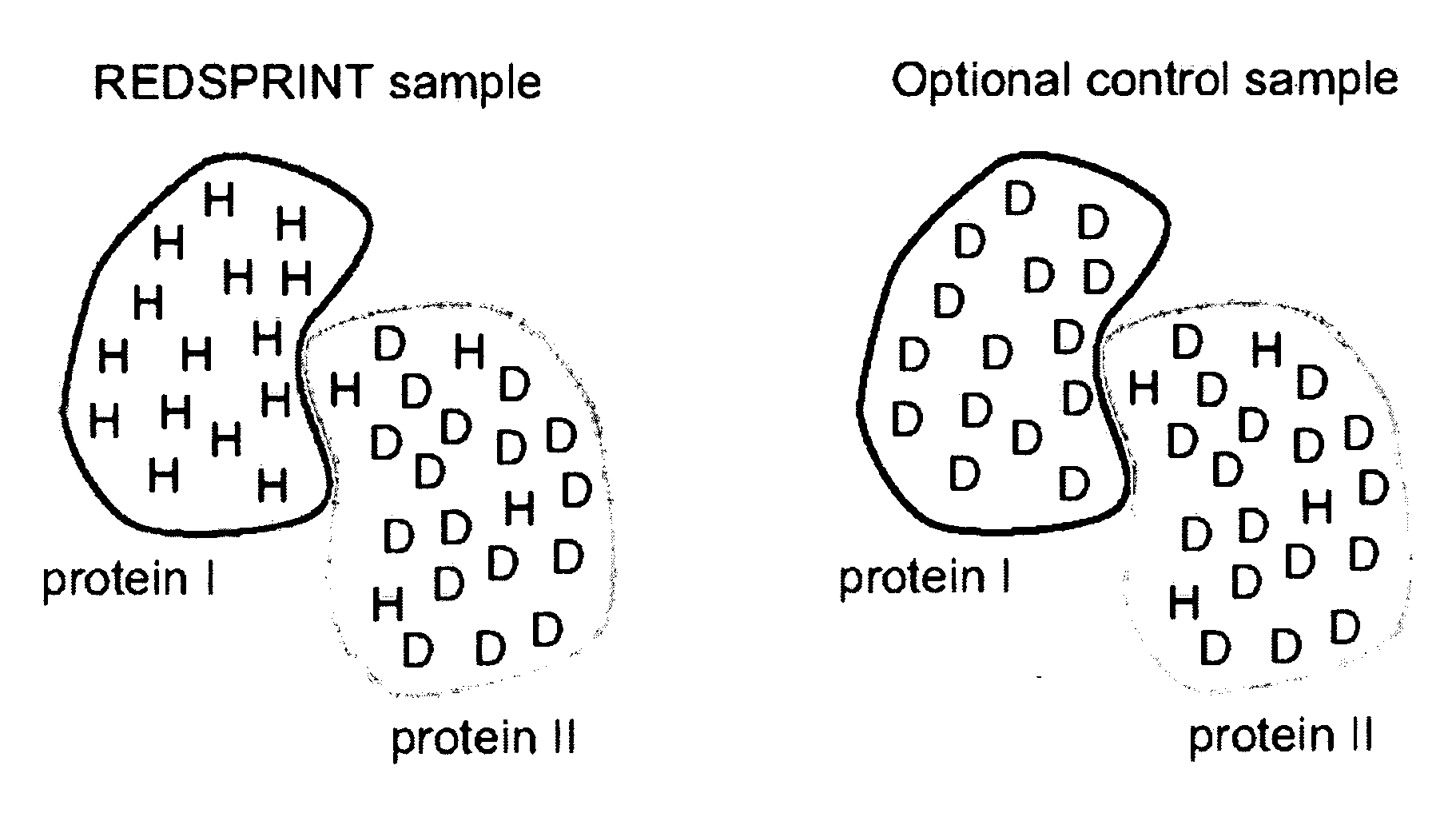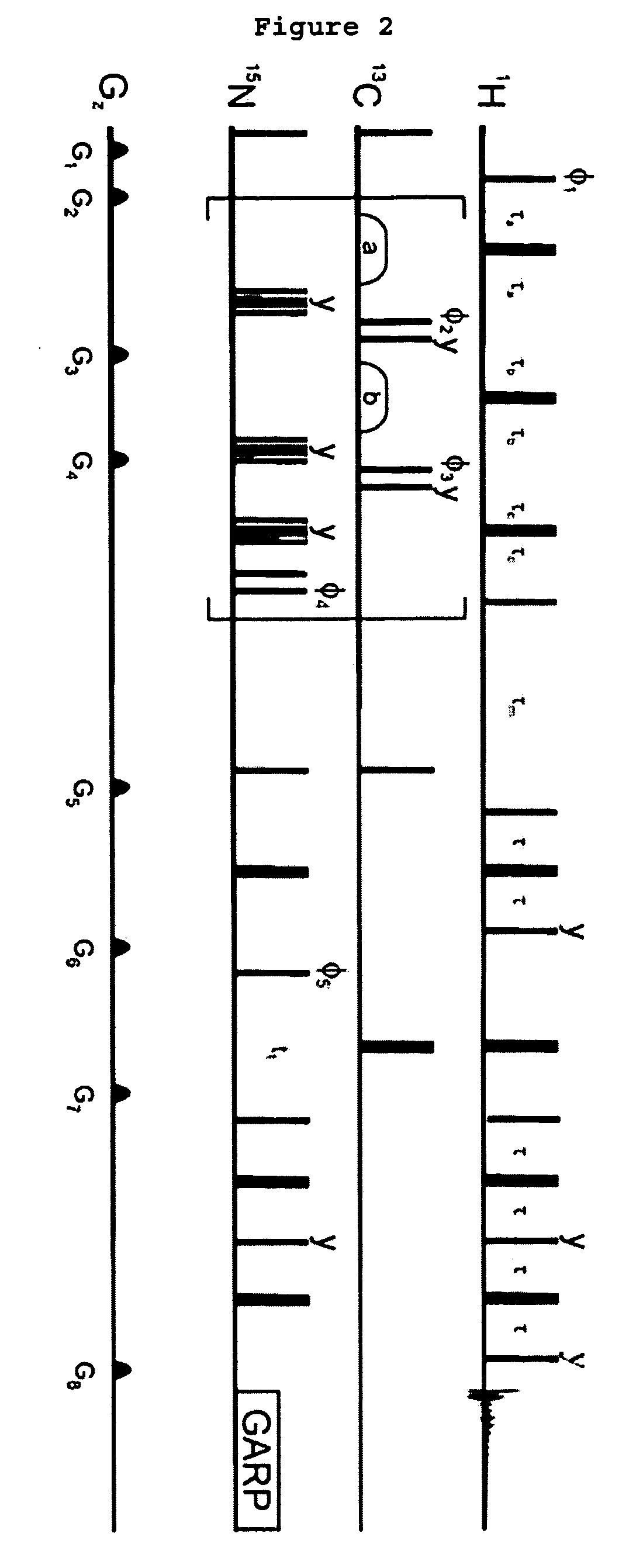Methods and devices for characterizing macromolecular complexes using isotope labeling techniques
a macromolecular complex and isotope labeling technology, applied in the direction of instruments, materials, molecular structures, etc., can solve the problems of complex resolution and identification, and inability to characterize macromolecular complexes in a single step, so as to reduce the density of 1h
- Summary
- Abstract
- Description
- Claims
- Application Information
AI Technical Summary
Benefits of technology
Problems solved by technology
Method used
Image
Examples
example 1
[0038] Ataxin 3 is a poly- and monoubiquitin binding protein and possesses ubiquitin protease activity. [6] Polyglutamine expansion of Ataxin 3 is implicated in the development of neurodegenerative Machado Joseph disease. Ataxin 3 possesses two ubiquitin interacting motifs (UIMs) mediating its interactions with ubiquitin. UIMs are short 20 amino acid sequences found in many ubiquitin interacting proteins including proteins involved in proteasomal and endocytic degradation pathways. Ataxin 3 UIMs are required for the localization of Ataxin 3 into aggregates in affected neurons and essential for the disease pathology.
1. Principle of the Method
[0039] Human ubiquitin (Mw=9.45 kDa) was triply labeled (15N, 13C, 2H) following the REDPRO (reduced proton labeling) method [5] so that, on average, 9% of the hydrogen sites in the protein were occupied by 1H isotopes (sites are not deuterated uniformly [5]). The ataxin 3 UIM (AUIM), (Mw=5.2 kDa) was prepared in a minimal medium with natural ...
example 2
Synthesis of Dilute Isotopes
[0056] The host strain of E. coli BL21 is freshly transformed with the expression construct. Cells from overnight culture grown on unlabeled M9 minimal medium in 1H2O are collected by centrifugation, washed in phosphate-buffered saline, resuspended in labeling minimal medium, and grown at 37.° C. from OD600 (optical density at a 600 nm wavelength) 0.5 to 0.8. In about two to three hours cells adapt to growth in D2O and reach the indicated cell density. Protein overexpression is induced by addition of 0.5 mM IPTG and the cells are aerated for 20 h at 37° C. Finally, the cells were collected for further purification. The yield of protein using the reduced proton (REDPRO) labeling scheme is similar to that of the standard [U-13C, 15N] labeling scheme.
example 3
Direct Use of the Physical Principle of the Different Properties of the Reduced Density Material Compared to Standard Density Material
[0057] A reduced proton density in any molecule leads to less efficient proton-proton dipolar relaxation. This has two consequences: first, due to longer transverse relaxation times, coherence transfers and detection are more efficient. Secondly, longitudinal cross-relaxation is less efficient. This is of particular interest to detect the interface with any high-proton density system. The high-proton density system behaves as a polarization bath which is only coupled to the few protons from the low-proton density partner located at the interface. Transient (see example 1, point 2) or steady-state (see example 1, point 3) nuclear Overhauser effects can be detected this way.
[0058] This principle is general and can be applied to a full range of interfacial systems, far beyond the protein-protein model presented in example 1. This is of use for any kin...
PUM
 Login to View More
Login to View More Abstract
Description
Claims
Application Information
 Login to View More
Login to View More - R&D
- Intellectual Property
- Life Sciences
- Materials
- Tech Scout
- Unparalleled Data Quality
- Higher Quality Content
- 60% Fewer Hallucinations
Browse by: Latest US Patents, China's latest patents, Technical Efficacy Thesaurus, Application Domain, Technology Topic, Popular Technical Reports.
© 2025 PatSnap. All rights reserved.Legal|Privacy policy|Modern Slavery Act Transparency Statement|Sitemap|About US| Contact US: help@patsnap.com



